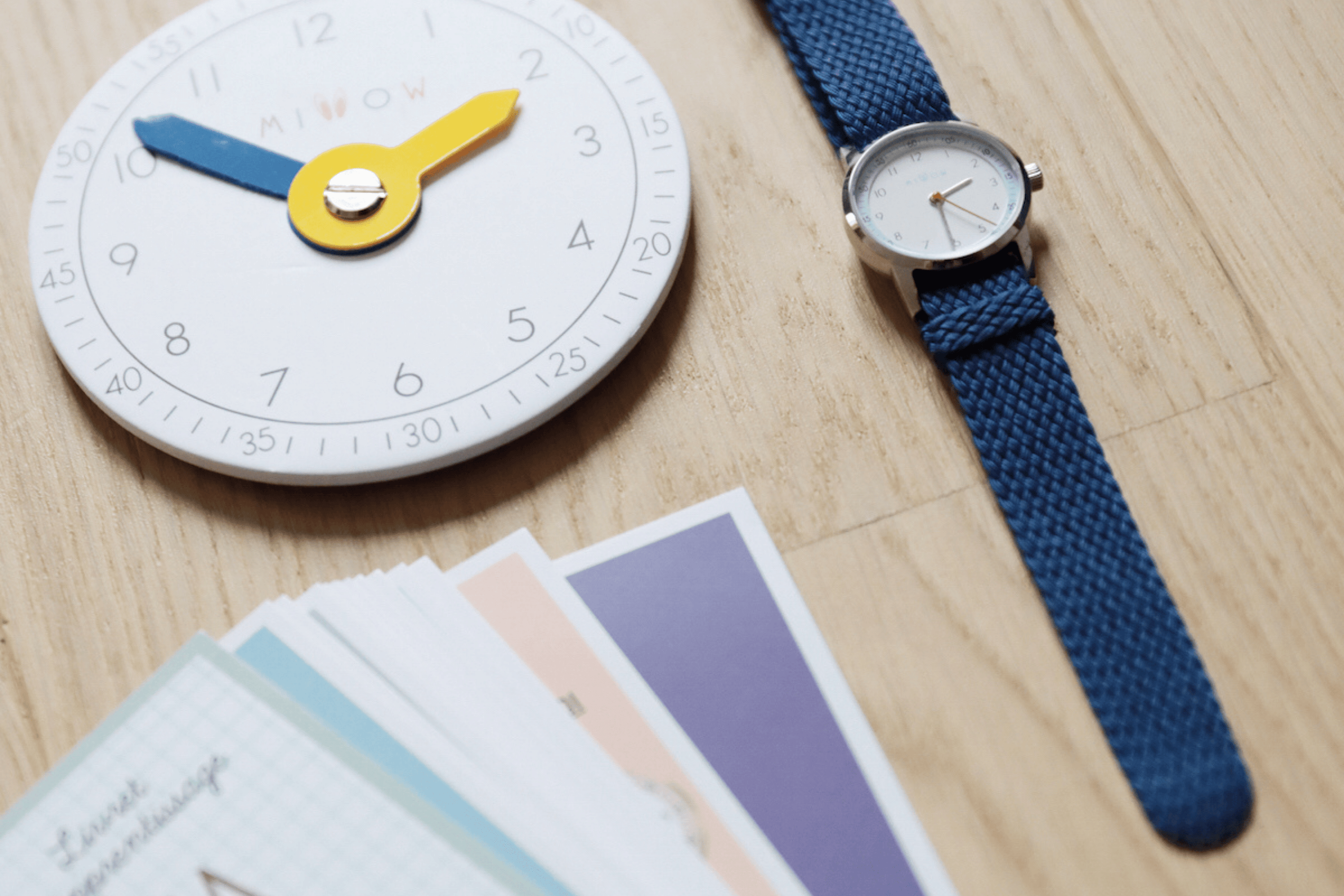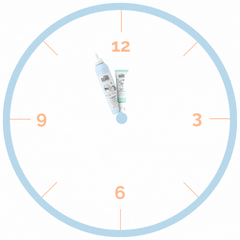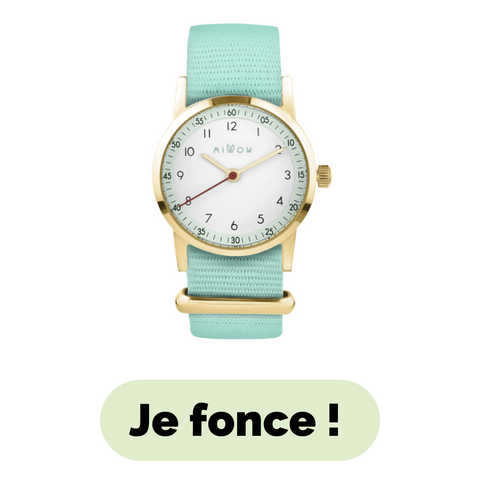
Millow Paris' 5 tips for teaching children to tell the time
Learning to tell the time marks a new stage in the autonomy of our toddlers! It is assimilating, locating and mastering the notion of time. Often complex concept, relying on good elements, learning becomes child's play.
Before moving on to telling the time on a clock or watch, make sure your child knows how to count to 60 and from 5 to 5 . These two notions are essential to understand the concept of minutes, hours and dial cutting.
1 - Explain the concept of time
From the age of 5 or 6, children begin to find their bearings in time through the highlights of the day: breakfast, recess at school, lunch, snack time, evening rituals with homework, bath etc.

Little by little, they integrate the days of the week, the months and the time.
Before learning to tell the time, here are some tips for becoming familiar with the concept of time by associating the time with concrete tasks of the day: Rather than telling children “You have to finish your homework before 5 p.m.”, why not tell them “You have to finish your homework before mom comes home”. Or, rather than saying “I will be home at 7 p.m.”, instead explain “I will be back as soon as you have taken your bath and started your dinner”.
The child will thus gradually have a temporal order that will take shape in his head.
2- Observe and fully understand the dial
With an analog watch, introduce your child to the dial . ⏰ Ask him to observe and describe what he sees, without immediately talking about specific terms but, to quote the elements he perceives such as numbers and hands.3 - Explain the differences between all the needles
The watch is made up of 12 equal portions that represent the morning and evening hours. The hours are written in large and shown by the smallest hand which turns very slowly.
Around the minutes : its larger hand goes faster than the hour hand . Divided into 12 equal parts, the needle advances 5 by 5.
And finally, the second hand : the longest, thinnest and very fast hand calculates the seconds. One revolution of the second hand represents 60 seconds, or one minute.
The advantage ofMillow Paris* watches is that each hand has a different color code so that they can be differentiated more easily. The clear and refined dial is easy to understand, pleasant to observe.
4 - Practice with the Millow learning kit
Playful by its shape, inspired by the "Incollables" , its double-sided questions-answers bring a fun side and an easy handling of the learning kit . As playful as it is sensory, it has a lot in common with our treatments!

Accompanied by a disc to practice turning the needles, it promotes the practice of the child. Learning to tell the time thus becomes a fun game.
Pedagogical , the lessons of the kit evolve progressively, at the pace of the child. The first lessons and exercises focus on learning the hours. Then, when they are ready, they can tackle the minutes chapter and finally differentiate between the morning dial and the afternoon dial.
5 - Everyone has their own pace, we take our time
Because it is often easier for a child to learn to tell the time when he is comfortable with the tens and understands that we stop at 60 when talking about time, they learn to tell the time in CE1 around the age of 7. Learning then continues in CE2 and is better mastered in CM1 around the age of 9.
The important thing is that the development of the notion of time takes place gradually. Each child is unique and develops at their own pace. As a parent, the best method is to remain patient, pedagogical and to use the right words that adapt to their time markers in order to facilitate this learning of time.
* Millow Paris creates watches with a timeless and playful style for children and young adults. Offering a wide range of interchangeable straps, they change according to mood, occasion or season! Slightly retro and made in France, they are designed to stand the test of time.


